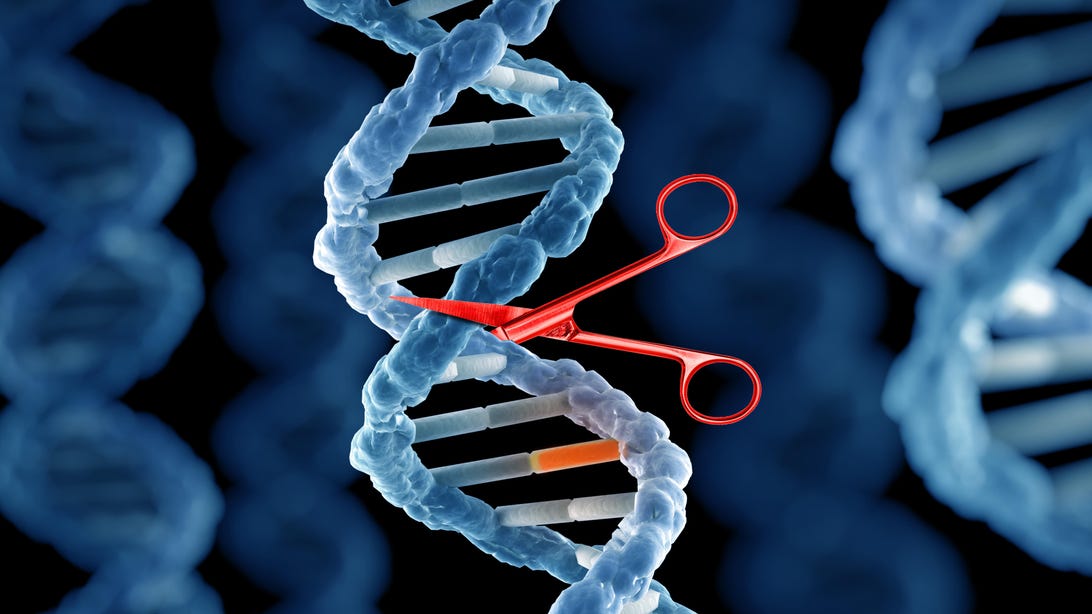Enabling Precise Gene Insertion: Advances In Gene Editing Technology

Table of Contents
CRISPR-Cas Systems: The Workhorse of Gene Editing
CRISPR-Cas systems have rapidly become the dominant gene editing technology due to their relative simplicity, efficiency, and versatility. Their ability to target specific DNA sequences makes them ideal for precise gene insertion, although challenges remain.
Mechanism of CRISPR-Cas9 for Gene Insertion
The CRISPR-Cas9 system utilizes a guide RNA (gRNA) molecule to direct the Cas9 nuclease enzyme to a specific DNA sequence. Cas9 creates a double-strand break (DSB) at the target site. The cell then repairs this DSB through either non-homologous end joining (NHEJ), a process prone to errors, or homology-directed repair (HDR). HDR uses a provided DNA template to repair the break, allowing for precise gene insertion.
-
Advantages of CRISPR-Cas9:
- High efficiency compared to other methods.
- Relatively simple and inexpensive to implement.
- Easily programmable targeting through gRNA design.
-
Limitations of CRISPR-Cas9:
- Off-target effects (unintended cuts at similar sequences).
- Low HDR efficiency compared to NHEJ.
To enhance precision, base editors and prime editors have been developed. Base editors directly modify single base pairs without creating a DSB, minimizing off-target effects. Prime editors combine Cas9 nickase with reverse transcriptase to make more complex edits, including insertions and deletions with higher accuracy.
Beyond Cas9: Exploring Novel CRISPR Systems
While Cas9 is widely used, other CRISPR systems offer potential advantages for precise gene insertion.
-
Cas12a (Cpf1): Cas12a creates staggered DSBs, potentially improving HDR efficiency. It also uses a smaller gRNA, making delivery easier.
-
Cas13a: While primarily targeting RNA, Cas13a shows promise for gene regulation and could potentially contribute to precise gene insertion strategies indirectly.
Ongoing research explores diverse CRISPR systems from various bacterial species, aiming to discover enzymes with enhanced specificity and improved HDR efficiency for more precise gene editing. The goal is to find systems that are both efficient and minimize the risk of off-target effects.
Non-CRISPR Gene Editing Technologies for Precise Gene Insertion
While CRISPR dominates the field, other gene editing technologies offer alternative approaches to precise gene insertion.
Zinc Finger Nucleases (ZFNs) and Transcription Activator-Like Effector Nucleases (TALENs)
ZFNs and TALENs are engineered nucleases with customizable DNA-binding domains that target specific sequences. They create DSBs, which are then repaired via HDR, facilitating gene insertion.
-
Advantages: High specificity compared to early generations of gene editing tools.
-
Disadvantages:
- More complex and expensive to design and produce than CRISPR systems.
- Lower efficiency than CRISPR in many applications.
Their current applications are limited compared to CRISPR due to higher costs and complexity; however, they still hold value in specialized applications where high specificity is paramount.
Other Emerging Technologies
Other emerging technologies are showing promise for the future of precise gene insertion.
-
Meganucleases: These naturally occurring enzymes recognize longer DNA sequences, potentially leading to higher specificity.
-
Transposon-based systems: These utilize naturally occurring "jumping genes" to integrate DNA sequences into the genome. They offer a less precise but potentially more efficient way to insert genes into certain genomic locations.
These technologies are at earlier stages of development compared to CRISPR, ZFNs, and TALENs, but their unique properties make them attractive avenues for future gene insertion research.
Challenges and Future Directions in Precise Gene Insertion
Despite significant progress, several challenges remain in achieving truly precise gene insertion.
Improving HDR Efficiency
The low efficiency of HDR compared to NHEJ remains a major hurdle. Strategies to improve HDR include:
-
Optimized donor template design: Improving the design of the DNA template used for HDR can increase its efficiency.
-
HDR-enhancing molecules: Molecules that stimulate HDR pathways are being developed to increase the rate of precise gene insertion.
Overcoming this limitation is crucial for making gene editing techniques more effective and reliable.
Minimizing Off-Target Effects
Off-target effects are a significant concern in gene editing, potentially leading to unwanted mutations or other adverse consequences. Strategies to mitigate these effects include:
-
Improved guide RNA design: Careful design of gRNAs can minimize off-target binding.
-
Paired nickases: Using two nickases that require simultaneous cuts to create a DSB improves specificity.
The development of more sophisticated tools and algorithms for targeting is vital for reducing the risk of off-target effects.
Ethical Considerations and Regulatory Aspects
The power of gene editing technologies raises significant ethical concerns, particularly regarding germline editing (modifying genes in reproductive cells). Careful consideration is needed to address:
-
Potential risks: The long-term effects of gene editing are not fully understood, necessitating careful evaluation of potential risks.
-
Accessibility and equity: Ensuring equitable access to gene editing therapies is essential to avoid exacerbating existing health disparities.
Stringent regulations and ethical guidelines are crucial to ensure the responsible development and application of these powerful technologies.
Conclusion
Precise gene insertion is crucial for realizing the full therapeutic and biotechnological potential of gene editing. While CRISPR-Cas systems have emerged as powerful tools, ongoing research focuses on improving their precision and exploring alternative approaches. Overcoming challenges such as low HDR efficiency and off-target effects, coupled with careful ethical consideration, will be essential for the safe and effective application of these technologies. Further advancements in gene editing technology, especially concerning precise gene insertion, promise transformative breakthroughs in treating genetic diseases and developing novel therapeutic strategies. Learn more about the exciting field of gene editing and the advancements in precise gene insertion by exploring further resources available online.

Featured Posts
-
 Ticketmasters Oasis Tour Ticket Sales A Consumer Protection Law Audit
May 30, 2025
Ticketmasters Oasis Tour Ticket Sales A Consumer Protection Law Audit
May 30, 2025 -
 Glastonbury 2025 Ticket Resale Timing Dates And Price Expectations
May 30, 2025
Glastonbury 2025 Ticket Resale Timing Dates And Price Expectations
May 30, 2025 -
 The Underside Of Roland Garros How Opponents Experience The French Open Crowd
May 30, 2025
The Underside Of Roland Garros How Opponents Experience The French Open Crowd
May 30, 2025 -
 Gorillazs House Of Kong A 25th Anniversary Retrospective
May 30, 2025
Gorillazs House Of Kong A 25th Anniversary Retrospective
May 30, 2025 -
 Juedische Sportgeschichte Augsburgs Rueckkehr Und Beitrag
May 30, 2025
Juedische Sportgeschichte Augsburgs Rueckkehr Und Beitrag
May 30, 2025
